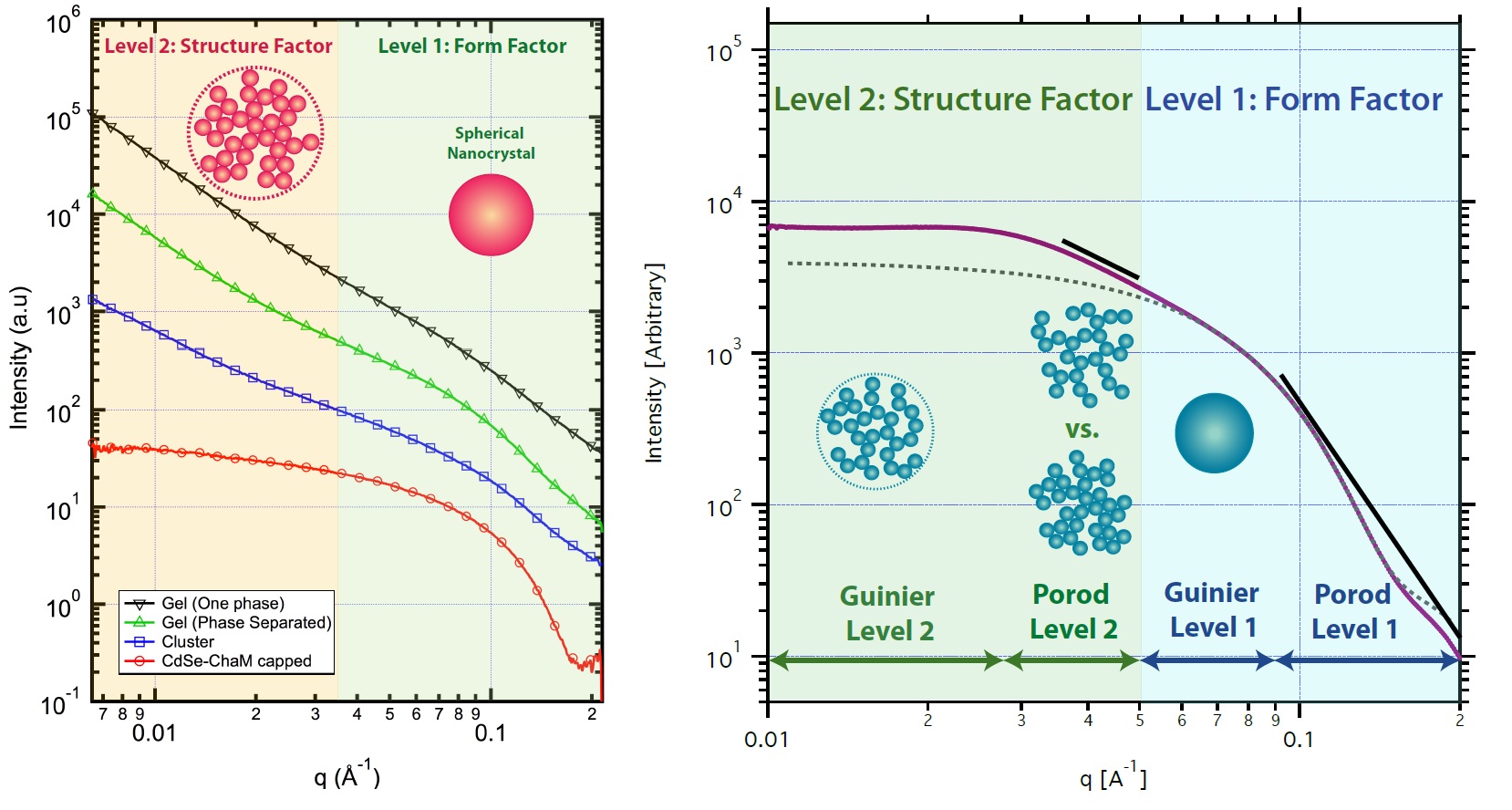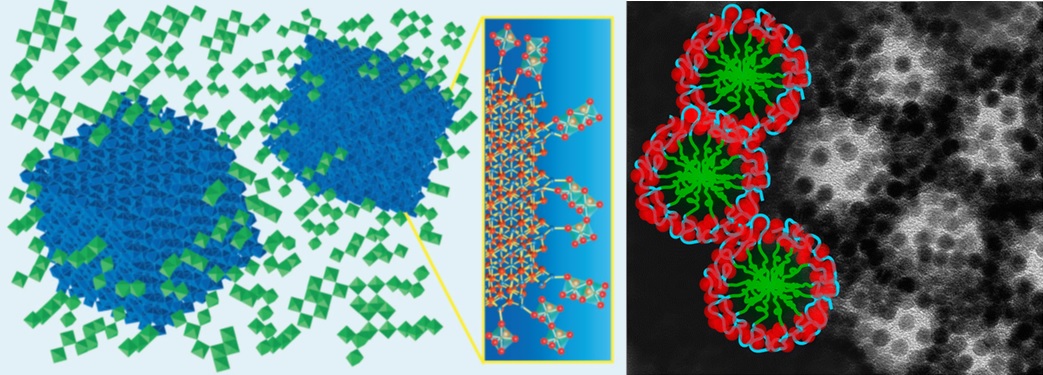
Nanocrystal Assembly and Integration

The unique properties of nanostructures can yield exciting functionality at larger scales, especially when ensembles of these nanostructures are assembled in a controlled fashion. The inherent forces between nanocrystals in solution can guide the formation of functional assemblies [1]. Additional control can be achieved by employing structure directing agents to precisely guide ensemble architecture at multiple length scales. Ensembles of nanocrystals can create useful synergistic effects, and the assembly architecture itself can have a major impact on material properties.

Nanocrystal-in-glass composites of ITO nanocrystals in niobium oxide demonstrate superior optical and electrochemical properties, compared to either component independently, because of the interfacial bonding environment [6]. Assembly of nanocrystals into micellar coronas by block copolymer yields composites exhibiting order on two length scales [4].
The Milliron group has studied nanocrystal assembly conditions across a wide range of loading configurations. The surface chemistry of nanocrystals and linker agents can be tuned to form polymer-like nanocrystal gels [1,2], and block copolymers or homopolymers can be used to direct the assembly of ordered structures and mesoporous networks [3, 4]. Solution processing conditions can be manipulated to yield close-packed superlattice films with robust electronic connectivity [5]. The structure of nanocrystal assemblies can be followed by small angle X-ray scattering, which is also suitable for in situ monitoring of mesoscale transformations.
The Milliron group also pursues research on the synergistic behaviors that result from the interfaces between nanostructures in composite materials. One such example is the increase in electrochromic response of ITO nanocrystal-in-NbOx glass composite films due to unique ordering at interfacial regions [6, 7]. This effort bridges our understanding of assembly with other research areas of the group, such as electrochromic device design and interfacial charge transport. Rational assembly design is a powerful tool to integrate the properties of nanomaterials with macro-scale functionality.
Related papers:
[1] CA Saez Cabezas, GK Ong, RB Jadrich, BA Lindquist, A Agrawal, TM Truskett, and DJ Milliron. “Gelation of plasmonic metal oxide nanocrystals by polymer-induced depletion attractions,” PNAS, (2018), doi.org/10.1073/pnas.1806927115 [link]
[2] A Singh, BA Lindquist, GK Ong, RB Jadrich, A Singh, H Ha, CJ Ellison, TM Truskett, and DJ Milliron. “Linking Semiconductor Nanocrystals into Gel Networks through All-Inorganic Bridges,” Angew. Chem., Int. Ed., 54 (2015), 14840–14844 [link]
[3] R Buonsanti, TE Pick, N Krins, TJ Richardson, BA Helms, DJ Milliron. “Assembly of Ligand-Stripped Nanocrystals into Precisely Controlled Mesoporous Architectures,” Nano Lett, 12 (2012), 3872 [link]
[4] GK Ong, TE Williams, A Singh, E Schaible, BA Helms, DJ Milliron. “Ordering in Polymer Micelle-Directed Assemblies of Colloidal Nanocrystals,” Nano Lett., 15 (2015), 8240-8244 [link]
[5] R Sharma, AM Sawvel, B Barton, A Dong, R Buonsanti, A Llordes, E Schaible, S Axnanda, Z Liu, JJ. Urban, D Nordlund, C Kisielowski, and DJ Milliron. “Nanocrystal Superlattice Embedded within an Inorganic Semiconducting Matrix by in Situ Ligand Exchange: Fabrication and Morphology,” Chem. Mat., 27 (2015), 2755-2758 [link]
[6] A Llordes, G Garcia, J Gazquez, DJ Milliron. “Tunable near-infrared and visible light transmittance in nanocrystal-in-glass composites,” Nature, 500 (2013), 323 - 326 [link]
[7] A Llordes, Y Wang, A Fernandez-Martinez, P Xiao, T Lee, A Poulain, O Zandi, CA Saez Cabezas, G Henkelman, and DJ Milliron. “Linear topology in amorphous metal oxide electrochromic networks obtained via low-temperature solution processing,” Nature Mat., 15 (2016), 1267–1273 [link]